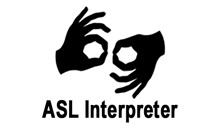
Late last year, Darrell Bock published an introductory book on a topic he has been writing about for years. Dr. Bock teaches at Dallas Theological Seminary (faculty bio) and writes prolifically on culture and cultural engagement.
What I have noticed about this genre is that the books tend to be very thick, and very complex; my favorite example of this is D. A. Carson’s, The Gagging of God, which is a terrific book. However, Bock has written a short and useful introduction, Cultural Intelligence: Living for God in a Diverse, Pluralistic World. There is really a lot to like here by way of an introductory approach to the subject. My favorite authors in this area are D. A. Carson and William Edgar, and my favorite practical introduction is K. Scott Oliphint and Rod Mays, Unshakeable: Standing Firm in a Shifting Culture.
To give you a taste of Bock’s practical style, here are what he calls the six key texts for cultural engagement (and I agree):
- Ephesians 6.10-18
- 1 Peter 3.13-18
- Colossians 4.5-6
- Galatians 6.10
- 2 Corinthians 5.17-21
- 2 Timothy 2.22-26
He begins here and charts what he calls a relational approach rather than a model of engagement approach or specific topic approach. Over and over again he approaches cultural engagement as a matter of challenge and invitation, describing ways to do both effectively.
“With our daily lives, how do we extend a hand of invitation while at the same time faithfully representing the challenge of the gospel” (38)?
The key relational components to Bock include gentleness, listening, and grace. He sees both challenge and invitation at work in the ministry of Paul who is able to do both because he understands how culture works (Romans 1.18-32) and as he engages (Acts 17.16-34).
Bock’s intention seems to be emphasizing the invitational aspect of engaging culture, but he carefully guides what that invitation component should feel like, and sound like. In the center of the book is a wonderful chapter on how to have conversations. This will be very frustrating to those who are either more confrontational by temperament, or those who struggle to control knee-jerk, media-driven opinions. In many ways, Bock commends a method that involves being slow to speak, listening carefully, tons of patience, and learning how to analyze a conversation in the moment on three separate channels: facts, filters, and identity. There is some very helpful information here on how to conduct yourself in a conversation that paves the way for challenge and invitation.
At the very end, Bock thinks that our engagement needs to take into account that we can no longer defer to a cultural baseline of biblical knowledge. As a scholar of biblical interpretation, he is qualified to speak here, even though his application is sometimes difficult to imagine. Chiefly, he believes that we need to recognize that ‘the Bible says this …’ kind of argument is hard to sustain today. He calls this reading from “Bible to life.” Bock says that, for today, good cultural engagement requires that we read from “life to the Bible.”
He says,
“In sum, ‘life to the Bible’ means noting tensions and facing up to those tensions. It means taking life and its choices through the ‘fallen world’ lens, working back toward how to be biblically righteous in the midst of such tension. In particular, it requires balancing a constant issue regarding mission in the fallen world: How do I challenge my culture while at the same time inviting my culture into sacred space? How do I give pause to someone’s thinking and suggest there is another way, a biblical way, to see life” (106-7)?
At the heart of this proposal is Bock’s sense that the gospel takes us into a unique space as we engage culture today. In this space, “salvation is about more than the cross. It is about a new life reconnected to God and reclaiming the stewardship to which He has called all humans” (79).
Bock’s relational approach is gospel-centered and biblical, it calls for patience and listening (and courage). It also depends upon “reading culture through scriptural eyes, looking both for positive longings and negative faults (108). This will take not just biblical knowledge, but an awareness of how the story of redemption unfolds in the Bible.
Again, the commendation of Cultural Intelligence is its introductory aim, and its focus on the clearest passages of Scripture. I think this book pairs nicely with one of my favorite primers on doing evangelism, Honest Evangelism: How to Talk About Jesus Even When It’s Tough, by Rico Tice.







